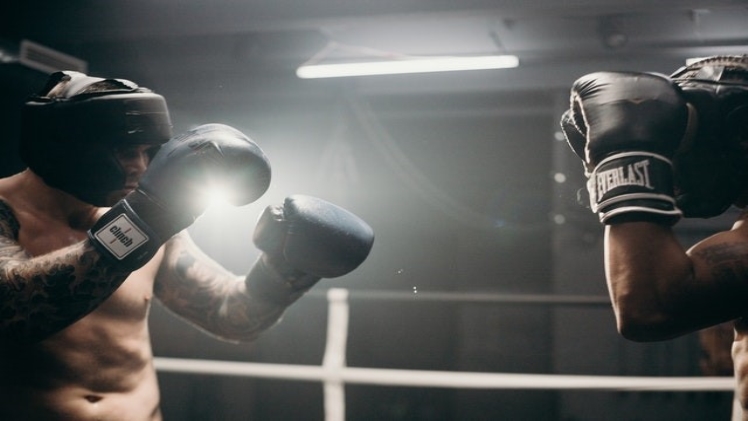Boxing is, in essence, the world’s oldest sport. Fighting is the most basic kind of conflict, and it has existed since the dawn of time. Boxing competitions have been around since 688 BC, when they featured in the ancient Olympic Games, while more controlled, codified forms date back to the 1500s. Sculptures from the third millennium B.C. show humans fist-fighting in front of crowds, implying that the art of pugilism is ancient.
It is crucial to remember that different regions of the world have different sorts of boxing rules for various forms of boxing. Although many sanctioning organizations and state commissions have modifications, the most commonly accepted norm is the Association of Boxing Commissions’ (ABC) unified regulations.
According to Next Gen News, the A.B.C.’s core regulatory framework consists of the following rules:
- The number of rounds in each event can vary, but each round must last three minutes with a minute in between.
- The referee (often referred to as the “third man in the ring”) is the only official who can stop play. This may be the commissioner’s recommendation or the first doctor’s advice, but the referee should be the one to make the “call.”
- The three judges score points and decide on the winner of the boxing match.
- In any controlled match, the ten-point system is a normal scoring process. This means that every fighter who wins the round gets 10 points. On the other hand, the opponent receives less reward depending on the severity of the defeat in the round.
- Any boxer who falls during a fight must get back on his feet, recover, and be physically and mentally fit to continue the match within an eight count.
- During the competition, each participant must use his or her mouthguard. If a boxer cannot keep his mouthguard in place between rounds, the referee must stop the fight and restart the round.
- There is no standing eight count rule. (The referee sometimes uses this technique to stop the match and evaluate if the fighter is fit to continue with the match.)
- The rule of three knockdowns does not apply. (This rule is sometimes used to avoid an unnecessary beat down to a boxer in the ring. The regulation stipulates that if the fighter falls three times in a round, he is not fit to continue the match, and the fight ends automatically.)
- If the boxer is knocked out of the ring completely, he has 20 seconds to return to the ring. This should be done without the help of his corner or the spectators watching the match. Any external contact with the boxer can lead to the deduction of points or disqualifying the fighter by the referee.
- In any round, the boxer who is knocked down on the ring and gets a count of ten cannot be saved by the bell. (That is, if a fighter falls and the bell to end the round rings, the round continues until the fighter stands, the referee examines them, and then announces whether or not they can continue the fight.) The bell does not instantly stop all activities Kingston Crossing Conway SC of the match.
- If there is any injury (cuts, swelling, broken bones, etc.) from a reasonably severe blow that warrants the end of the fight, the boxer who has received the injury is deemed to have been given a T.K.O. (technical knockout.)
- Injuries caused by intentional or involuntary faults are arbitrated in different ways. All rules, regulations, and information are referenced on the A.B.C.s webpage.
- Any boxer who accidentally gets a blow to his lower back should be given time to recover. The maximum time allowed for the fighter to recover is five minutes.
Weigh-In
Boxers for a World Boxing Federation championship bout must weigh in on calibrated scales a few hours before the planned match at a location designated by the local commission and in the presence of the World Boxing Federation Supervisor. Both boxers must access these scales at least two (2) hours before the official weigh-in.
Medical Exams
To encourage the protection of the boxers’ health and welfare, both contenders must provide all medical reports as needed by the local body in charge of the competition. Before the match, each boxer must also get a physical examination and permission from a physician approved by the local commission.
Visit the site: 7starhd me
Safety
At least two physicians must be present at ringside and situated near each boxer’s corner. Also, all boxers competing in championship bouts will be required to wear protective cups and mouthpieces.
Knockout, Knockdown, and Count
A boxer is considered “down” when any part of their body other than their feet is on the canvas after a legal blow as ruled by the referee. When a boxer is down, the referee must declare the count audibly as he moves his right arm downward, signifying the conclusion of each count during the countdown.

If the fighter is still down when the referee counts to ten, the referee must wave both arms to indicate that the boxer has been knocked out. If a boxer gets knocked out of the ring, they will be given a twenty (20) second count to return to the ring unassisted.
The Referee
The referee is the only arbitrator in all championship fights and the only person permitted to halt a match. He can do this at any point if he believes it is one-sided or if either fighter is in such bad shape that continuing would cause significant damage.
The Panel of Judges
Three judges will examine and score all championship bouts.
Stimulants and drugs
Any boxers’ use of illicit or performance-enhancing substances or other stimulants before or during the bout shall be grounds for disqualifying the fighter in question.
The Parting Shot
Each fighter is allocated a corner for each bout, which coaches and management primarily utilize during pauses. When a contender is down, the referee begins a ten-count. If he is still on the floor after the count, the opponent is declared the winner by knockout. In the absence of a knockout, the winner is chosen by a points system maintained by the judges.

